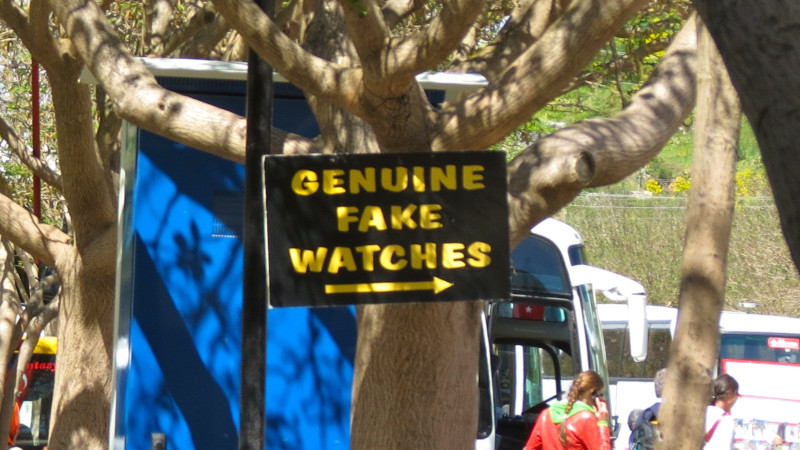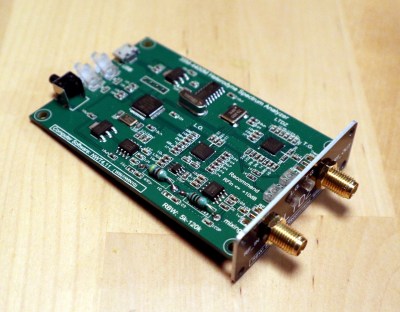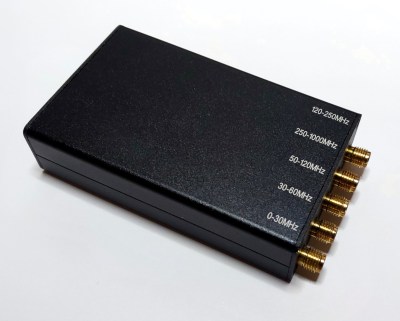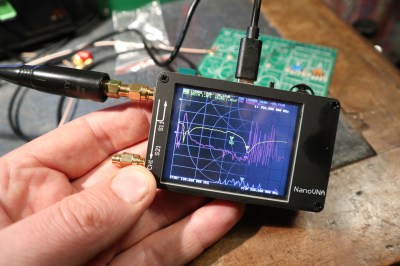
A while back, I bought a cheap spectrum analyser via AliExpress. I come from the age when a spectrum analyser was an extremely expensive item with a built-in CRT display, so there’s still a minor thrill to buying one for a few tens of dollars even if it’s obvious to all and sundry that the march of technology has brought within reach the previously unattainable. My AliExpress spectrum analyser is a clone of a design that first appeared in a German amateur radio magazine, and in my review at the time I found it to be worth the small outlay but a bit deaf and wide compared to its more expensive brethren.
When A Bargain Relies On Somebody Else

As part of my investigation I addressed the question of software, and found that the NWT4 package it relied on was the work of one man, [Andreas Lindenau, DL4JAL]. He made it available for free-as-in-beer on his website, which was fine when servicing German radio amateurs, but became a severe problem when he was expected to provide free personal tech support for thousands of buyers of a commercially mass-produced cheap instrument from China. I can’t blame him for taking it down under those circumstances, and neither should you.
This was a pattern I found repeated more recently, when my periodic scan for new cheap stuff turned up an SDR board. It’s a USB peripheral with a range from 0 to 1000 MHz, and when it arrived it became obvious that it was a clone of a commercially produced SDR.
The Clone Wars
The SDRplay RSP1 is a high-quality receiver that in its latest revised version costs around $100. The cheap clone I bought has inexpensive filter components, and has a line of input sockets because it lacks the RF input switch chip for different bands. It bears no branding, but a further search will find examples with RSP1 branding that definitely cross the line from “clone” to “fake”.

As you may have already guessed, the easiest way to get my SDR working would be to use SDRplay’s software and drivers for the RSP1. They’re easy enough to get hold of because they’re available for RSP1 owners, but they are unambiguously not free and are certainly not licensed for use with anything but a genuine SDRplay board.
It’s the same story as with [DL4JAL]’s spectrum analyser software; a commercially mass-produced clone board relies on software support from the originator who gets a something of a headache and who loses sales of the project they put all the hard work into developing. Other examples such as the Salae logic analyser clones to make it a subject that bears further investigation, so I reached out to both SDRPlay and to [DL4JAL] for their experiences. Of the two, SDRplay responded, and I had a conversation with [Jon Hudson], their marketing director.
On one hand, it’s understandable that SDRplay do not want to give publicity to the fakes and clones, which it’s evident have become something of a bugbear to them. The direct fakes are a clear breach of their trademarks, while the clones undermine the significant research and development investment that went into bringing the genuine products to market. Use of the software drivers with a clone or fake is a clear breach of the licence. I asked whether they would consider selling the driver as a product in its own right, and understandably the response was that they don’t want to endorse the closes and fakes in that way, neither do they wish to be embroiled in support for inferior hardware not of their own manufacture.
Enjoy Your Cheap Stuff, Responsibly

We all like cheap instruments, whether they are a logic analyser, an SDR, a spectrum analyser, or whatever. Sometimes the cheap products are based upon open source projects, such as the NanoVNA vector network analyser we looked at a while back, but it’s important to be aware that just as often they are clones of commercial products that have had a huge research and development applied to create them.
There may be some open-source enthusiasts who would respond that all such things should be open source hardware anyway, and that the devices have been somehow “set free” by the cloners. And we’d agree to the extent that Hackaday’s whole existence depends on open hardware and it would be a Utopian environment in which we could find any device of our choosing on GitHub and spin up our own version for a modest outlay.
But despite the many wonderful open source hardware projects out there, it’s imperative that promising commercial ones are not throttled, because without them we simply wouldn’t have so many of the devices we depend on. Ultimately, the choice is up to the producer of the device, right? And a cynic might ask why someone demanding a small producer open-source their device is not also pursuing a larger player for the same. Call me back when you’re standing outside Agilent Technologies with a placard demanding they open-source their ‘scopes!
Since we all like to see new products coming to market, it behooves us as the customers to question the origin of cheap new devices, and consider buying the real thing instead if they are clones or fakes. Judging by my clone SDR which is plagued with spurious peaks, I’d suggest that the real thing will be a far better product anyway.
(And just in case you’re wondering, the clones also work, legally, with the open-source LibMiriSDR software, which is what I used to test it out.)
Banner photo: “Genuine fake watches” by Erik Cleves Kristensen, CC BY 2.0.
0 Commentaires